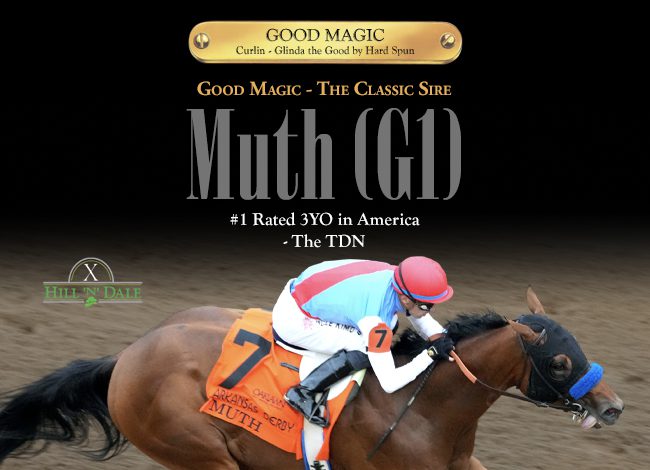By T. D. Thornton
The number of Thoroughbred mares reported as having been bred in North America in 2016 decreased 2.5% and the number of active North American stallions servicing those mares declined 1.8% according to The Jockey Club's “report of mares bred” (RMB) statistics through Oct. 15.
Within those continental downticks, only two individual states within the top ten list of RMBs by state stood out with increases in the number of mares bred: Maryland was up a whopping 15.8% (913 in 2016 compared to 788 at the same point last year) and Kentucky was up 1.7% (17,750 to 17,448).
Maryland increased its number of mares bred despite reporting four fewer active stallions (32 in 2016 compared to 36 last year), while Kentucky reported 227 active stallions (up from 208 in 2015).
Cricket Goodall, the executive director of the Maryland Horse Breeders Association, said in a Friday phone interview that she was busy preparing for Saturday's Maryland Million Day at Laurel Park and has not yet had time to read the full RMB report, but she indicated she was not surprised to learn Maryland has rebounded so robustly. The state's RMB increase, she said, can be partially attributed to a surge in breeding and racing incentives in Maryland and a downturn in similar programs in neighboring states.
“In the breeding industry [it's usually] incremental increases,” Goodall said. “In the states around us, I would guess that Pennsylvania and West Virginia saw incremental decreases [both did, and they were more than incremental: Pennsylvania was down 22% in RMB; West Virginia was down 32.9%]. What happened when Maryland was struggling against the slots states, a lot of our mares left for Pennsylvania and West Virginia, and now those states are having their issues, so I think a lot of those numbers are coming back to Maryland.
“People follow the money,” Goodall continued. “The mid-Atlantic region is certainly not dead. It's just that Maryland now has seen a revitalization, not only with the new revenue sources to the bred-funds and purses, but the [racetrack] facilities now have been upgraded, and there's a real sense of enthusiasm in Maryland again.
Goodall said she expects the upward momentum to continue in Maryland.
“The lucky thing that we had that other states weren't so lucky with is that Maryland has always had a real strong tradition and heritage and loyalty,” Goodall said. “When things were bad here, we didn't lose a lot of farms. We did lose horses; mares that went other places, but actual picking up and moving [of entire breeding operations] didn't happen. So we had an infrastructure that was in place when things were getting back on line. Maryland had bred-funds and we've had racing [in the region] longer than anybody else, and that is really paying off now.”
Kentucky traditionally leads North America in Thoroughbred breeding activity. During 2016, Kentucky stallions covered 52.6% of all of the mares reported bred in North America.
“I think, honestly, that there has been a moderate recovery in the sales and the [racing] circuit here in Kentucky, aided by things like historical horse racing and healthy GI Kentucky Derby/Breeders' Cup sort of thing,” said Chauncey Morris, the executive director of the Kentucky Thoroughbred Association/Kentucky Thoroughbred Owners and Breeders. “So there is a small bit of optimism on the part of folks that are broodmare owners.”
Morris too, was bullish on the near future for Kentucky breeding.
“There's sort of a re-organization going on in American horse racing and where we supply horses to,” Morris said. “Our horses seem to be doing pretty well, so they're marketable, and that trickles down on to broodmares and the stallion market [in terms of] just a bit more commercial activity happening here in the Bluegrass.”
As for North America's stallions, the number covering 100 or more mares decreased from 105 in 2015 to 100 in 2016. These stallions accounted for 40.6% of the total mares reported bred this year versus 41.8% of all mares bred in 2015.
Uncle Mo (Indian Charlie) led all stallions with 253 mares bred in 2016. Other stallions that covered at least 200 mares included Into Mischief (Harlan's Holiday) at 218, American Pharoah (Pioneerof the Nile) at 208, and Kitten's Joy (El Prado) at 201.
In total, 423 stallions covered 33,746 mares in North America during 2016.
But the numbers aren't final yet: Based upon historical reporting trends, The Jockey Club estimates an additional 2,000 to 3,000 mares will be reported as having been bred during the 2016 breeding season.
Not a subscriber? Click here to sign up for the daily PDF or alerts.






